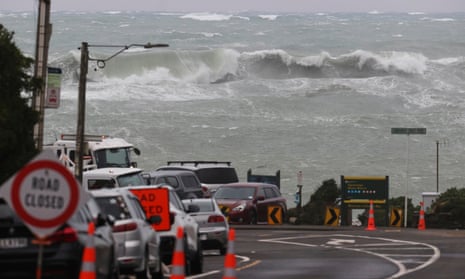Wild Weather in New Zealand: Extreme Winds, Floods, and Community Resilience

New Zealand recently faced a dramatic spell of severe weather, highlighting the power and unpredictability of nature in this stunning island nation. In recent days, the country was hit by destructive winds, relentless rain, and significant flooding. Communities across both the North and South Islands banded together to deal with the impact. In this article, we’ll explore what happened, how residents responded, and what it means for life in New Zealand.
A Surge of Extreme Weather Hits New Zealand
In early May 2025, New Zealand experienced some of its most severe weather in years. The national meteorological service, MetService, issued the rarest 'red warning' for the nation's capital, Wellington, and parts of the South Island. Winds exceeded 90 mph (150 kph) in Wellington, a city already famous for its gusty days. Torrential rain lashed Christchurch, the largest city in the South Island, causing rivers to burst their banks and submerge roads. According to AP News, thousands of properties lost power, schools and universities closed, and many flights were cancelled or delayed.
The Impact: Flooded Roads, High Waves, and Community Response
Large waves up to 6 metres battered the coastline, especially through the Cook Strait, hampering transport and leading to ferry service suspensions between the islands. Across eastern parts of the South Island, rain fell at a rate of over 100mm in less than 12 hours, with some mountainous areas seeing more than 50cm of snow. Local authorities declared a state of emergency in Christchurch and urged people to stay home whenever possible. Fortunately, despite the extreme conditions, no serious injuries or deaths were reported, underscoring the effectiveness of local emergency services and the resilience of New Zealand communities.
Why Is New Zealand Prone to Wild Winter Weather?
New Zealand’s unique geography makes it a hotspot for quickly changing and sometimes extreme weather. The country’s islands are separated by the Cook Strait, which acts as a natural wind tunnel during big storms. The Southern Alps in the South Island cause moisture-laden air from the sea to rise rapidly, resulting in heavy rainfall and snow. As The Guardian’s weather analysis explains, these geographical features contribute to the variable climate and severe events that Kiwis, as locals are known, often experience.
Staying Safe and Looking Forward
While wild weather in New Zealand is nothing new, this event stood out for its intensity and broad impact. Schools and cultural institutions in Wellington shut down, emergency services worked quickly, and everyone from local officials to everyday citizens played a part in keeping their communities safe. The ability of New Zealanders to come together in the face of adversity remains one of the country's defining qualities.
Conclusion
Extreme weather events like this remind us of the dynamic nature of New Zealand’s environment. For residents and visitors alike, staying informed and prepared is crucial. To learn more about recent weather challenges and see how New Zealand is responding, explore detailed reports by Reuters, The Guardian, and AP News. Staying connected and prepared helps ensure safety for everyone in this extraordinary island nation.